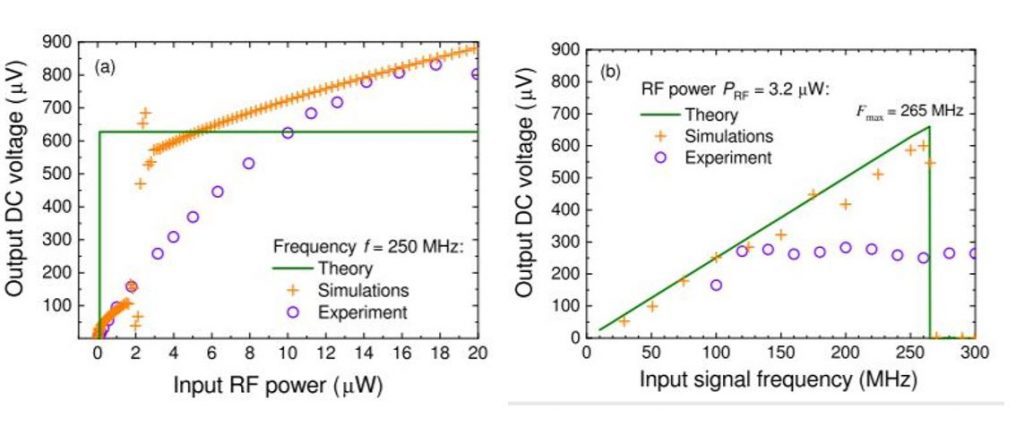
We demonstrate theoretically that in a spintronic diode (SD), having a free magnetic layer with perpendicular magnetic anisotropy of the first and second order and no external bias magnetic field, the out-of-plane regime of magnetization precession can be excited by sufficiently large (exceeding a certain threshold) RF signals with the frequencies ≲250 MHz. We also show that such a device can operate as a broadband energy harvester capable of converting incident RF power into a DC power with a conversion efficiency of ∼5%. The developed analytical theory of the bias-free SD operation can be used for the optimization of high-efficiency RF detectors and energy harvesters based on SDs. This work has been published in AIP advances and can be accessed here.
